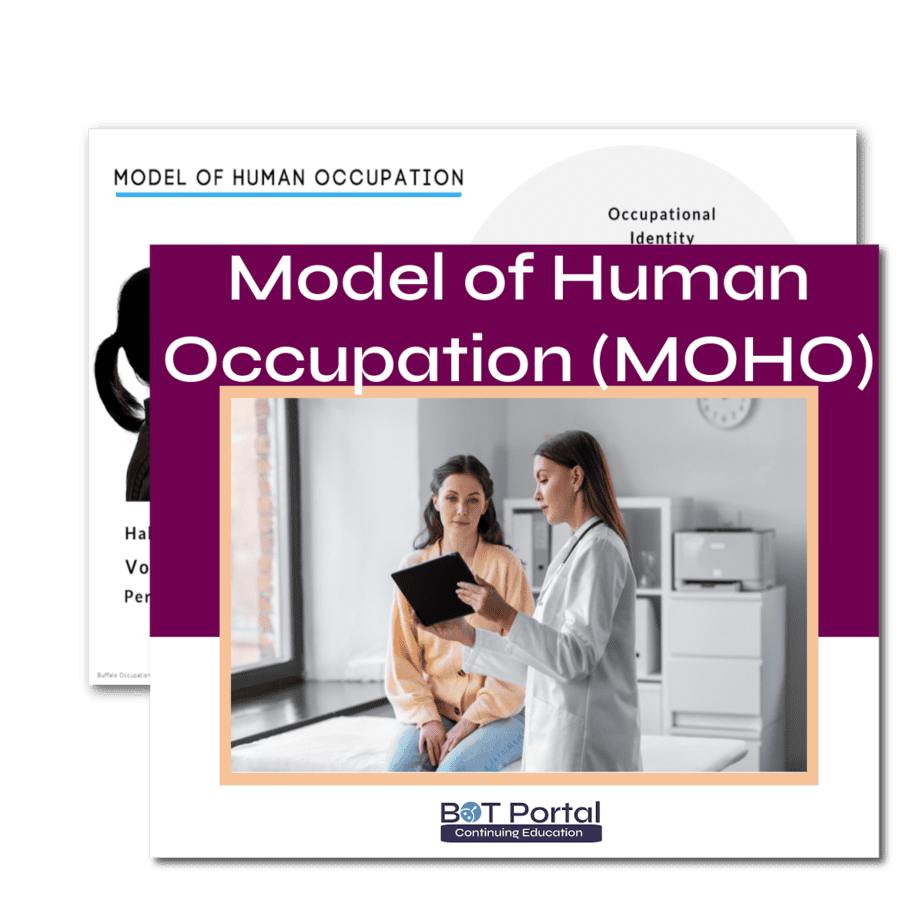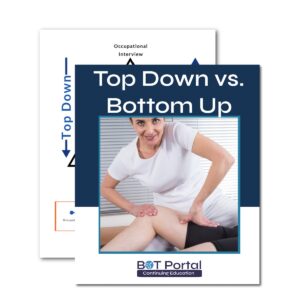Description
Model of Human Occupation (MOHO)
A Holistic Approach to Occupational Therapy
The Model of Human Occupation (MOHO) is a widely used framework in occupational therapy (OT) that helps therapists understand and address the complexities of human behavior and occupational performance. Developed by Dr. Gary Kielhofner in the 1980s, MOHO focuses on how individuals interact with their environment through activities, or occupations, and how these interactions affect their health and well-being.
Key Components of MOHO
MOHO emphasizes three key components that influence a person’s ability to engage in meaningful activities:
- Volition: This refers to a person’s motivation, interests, values, and goals. Volition drives individuals to choose and pursue activities that are important to them. For example, a person who values independence may be motivated to regain the ability to dress themselves after an injury. Understanding what motivates a person helps therapists tailor interventions that are personally meaningful and engaging.
- Habituation: This involves the roles and routines that structure a person’s daily life. Roles are the identities individuals take on, such as being a parent, student, or worker, while routines are the regular activities they perform within these roles. Habituation helps people know what to do and when to do it. For instance, a morning routine might include brushing teeth, eating breakfast, and commuting to work. Therapists consider how changes in health affect these roles and routines and work to restore or adapt them to fit the person’s current abilities.
- Performance Capacity: This refers to the physical and mental abilities required to perform activities. It includes the musculoskeletal, neurological, and cognitive functions that support action. For example, dressing requires fine motor skills to button a shirt and cognitive skills to sequence the steps involved. Therapists assess and address limitations in these areas to improve overall function.
Application in Rehabilitation
In OT rehabilitation, MOHO guides therapists in creating comprehensive, individualized treatment plans. Here’s how it works:
- Assessment: Therapists use various tools and observations to understand a person’s volition, habituation, and performance capacity. They might ask about daily routines, goals, and any difficulties faced in performing activities.
- Intervention: Based on the assessment, therapists develop interventions that are meaningful and motivating for the individual. This could involve practicing specific tasks, modifying the environment, or teaching new strategies to manage daily activities.
- Adaptation: Therapists help individuals adapt their roles and routines to their current abilities. This might involve finding new ways to perform tasks or using assistive devices to make activities easier.
- Evaluation: Therapists continuously evaluate progress and adjust the treatment plan as needed to ensure it meets the person’s evolving needs and goals.
The Model of Human Occupation is a holistic approach that considers the interplay between a person’s motivations, routines, and physical and mental abilities. By focusing on meaningful activities and personalized interventions, MOHO helps individuals in OT rehabilitation regain independence and improve their quality of life.



